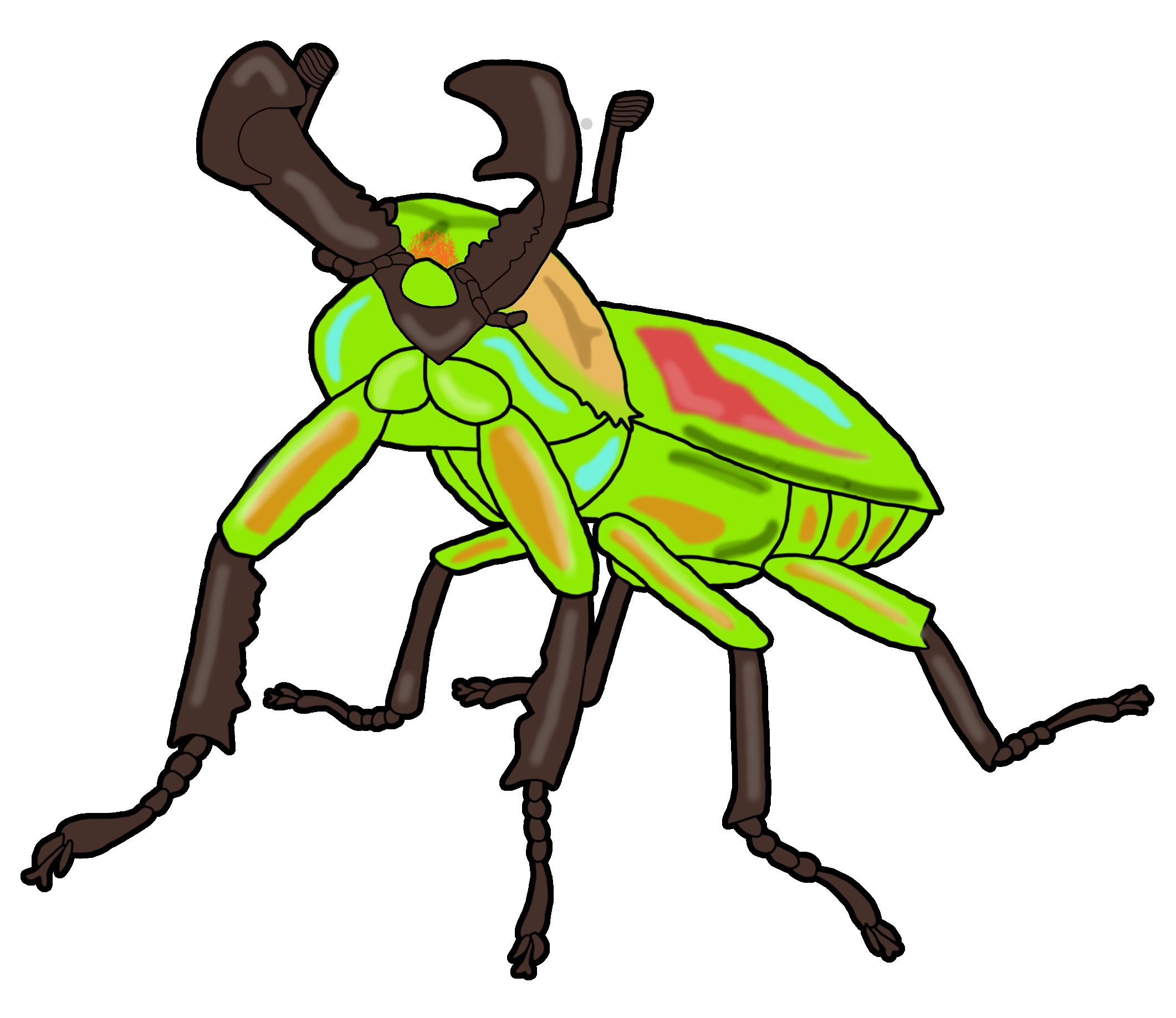The rainbow stag beetle
The rainbow stag beetle
Introduction
One of the most beautiful stag beetles (Coleoptera, Lucanidae) inhabiting the rainforests of Queensland (Australia) and New Guinea is the rainbow stag beetle (Phalacrognathus muelleri) [1]. Like other larger beetle species, the lifecycle takes years to complete. Larvae hatch from the eggs and grow over one or more years until they pupate. The larvae can spend their entire life in dead wooden parts of a single tree [8]. The adult insects hatch several months later. Unfortunately, little is known about this endangered species.
Habitus
The species has a strong sexual dimorphism. Males are generally larger (up to 63 mm) with long and strong mandibles, longer than the head and thorax together [1, 6]. Besides their impressive size, these beetles shine in bright metallic and varying colors. At its core a brilliant dark metallic green mixed with other spectral ranges across the entire body, interrupted by a dull brassy colored thorax [1].
Threats and conservation
Due to its size and spectral coloration it was highly sought after by collectors, illegally collected and sold for up to A$1071 per specimen in 1991 [2]. The prices and collection thread died out once hobby entomologists and companies were able to breed these beetles in captivity [3]. Now anyone can buy larvae or adults online for a fraction of the former prices [4].
The species remains threatened to this day since habitat destruction remains an ongoing problem. This is especially difficult in a species complex, with several known subspecies which are geographically isolated (i.e. Australia and New Guinea). Such scenarios enforce speciation and raises the need for genomic investigations in regards to gene flow between the subspecies. If speciation took place and both Australian and New Guinea harbour differentiated species, the conservation status has to be adjusted for moth species.
At the moment, the status of wild populations in Australia is not adequately assessed. Apparently, there was an Australian wide shortage on captive bred rainbow stag beetles as well [9]. Overall this species is to be considered highly threatened, due to the lack of research, the unknown wild population status and the continuing loss of habitat in their already small geographic range.
Ecology
Like other stag beetles, this species life cycle is build around dead wood. The adult beetles will lay their eggy in any white rotten moist wood [3]. The larvae feed of the rotting wood and need warm and constantly moist environment to thrive [5, 8]. An interesting observation was that flower chafer beetle larvae often coexist with the larvae of Phalacrognathus muelleri. It was suggested, that the Cetoniinae larvae likely feed of the faeces of the latter [7]. In this respect another study found that the internal gut microbiota changed between the early and late larvae instars [5]. This might not just be necessary for the developmental needs or different food sources between the instars, but also affect their environment and social interactions. In the end, the more larvae are available for putative predators, the higher the chance for few to survive. Attracting other species’ larvae could be a evolutionary strategy to ensure survival for over one year until pupation.
Adult insects feed of tree juices during their lifespan, but remain the migratory and reproductive stage in the species’ lifecycle. This is similar to many other insect species.
References
[1] Hawkeswood, T. J. Dattari (1886), an overlooked reference on Phalacrognathus muelleri (Macleay, 1885), Australia's most beautiful stag beetle (Coleoptera: Lucanidae).
[2] Hawkeswood, T., & Callister, D. J. (1991). Collection and Export ofAustralian. Traffic Bulletin, 12(3), 41.
[3] https://www.beetlebreeding.ch/phalacrognathus-muelleri/?msclkid=b28cf73ac3f911ecaa5547d124289424
[5] Wang, M., Xiang, X., & Wan, X. (2020). Divergence in Gut Bacterial Community Among Life Stages of the Rainbow Stag Beetle Phalacrognathus muelleri (Coleptera: Lucanidae). Insects, 11(10), 719.
https://www.mdpi.com/2075-4450/11/10/719/htm
[7] Tanahashi, M., & Fremlin, M. (2013). The mystery of the lesser stag beetle Dorcus parallelipipedus (L.)(Coleoptera: Lucanidae) mycangium yeasts. Bull. Amateur Entomol. Soc, 72, 146-152.
http://maria.fremlin.org/Tanahashi_Fremlin_AES_2013.pdf
[8] Fremlin, M. Lesser Stag Beetles Dorcus parallelipipedus (L.).
http://maria.fremlin.org/Fremlin_Hendriks_AES_2013.pdf
Submitted By Arctomology
for Jungle Expedition: Report
Submitted: 3 years ago ・
Last Updated: 3 years ago
